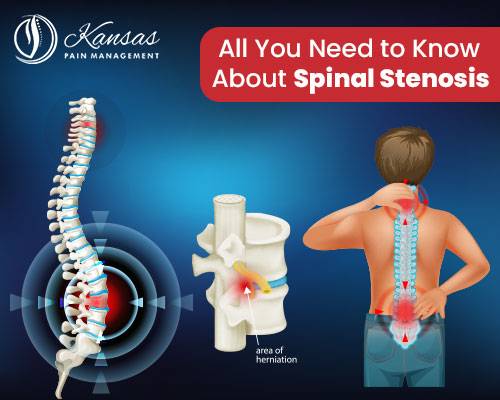Spinal stenosis is a common condition that affects the spinal canal, causing narrowing of the spaces within the spine. This narrowing can put pressure and cause inflammation on the nerves that travel through the spine, leading to pain, numbness, and weakness in the affected areas. In this article, we will cover all you need to know about spinal stenosis.
Causes:
Spinal stenosis can be caused by several reasons, such as age-related spine degeneration, herniated discs, arthritis, bone spurs, thicker ligaments, or spinal traumas. Some people are genetically predisposed to getting stenosis while others get it as a result of wear and tear on the spine over time.
Symptoms:
The symptoms of spinal stenosis vary based on the location and severity of the narrowing. Common symptoms include:
- Back or neck pain: Back or Neck Pain may be localized or radiate to other areas, such as the legs or arms.
- Numbness or tingling: Patients may experience decreased sensation or a sensation of pins and needles in the extremities.
- Weakness: Muscle weakness, particularly in the arms or legs, can occur due to nerve compression.
- Difficulty walking: Spinal stenosis in the lower back can cause leg pain and difficulty with walking or prolonged standing.
Diagnosis:
To diagnose spinal stenosis, a provider will typically start with a comprehensive medical history and physical examination. They may also order imaging tests such as X-rays, magnetic resonance imaging (MRI), or computed tomography (CT) scans to evaluate the extent of the narrowing and identify potential causes.
Treatment Options:
Treatment for spinal stenosis aims to relieve symptoms, improve mobility, and enhance overall quality of life. Non-surgical approaches are often the first line of treatment and may include:
- Lifestyle Modifications: Maintaining a healthy weight, practicing good posture, and avoiding activities that worsen symptoms can help manage spinal stenosis. In severe cases or when conservative treatments fail to provide relief, surgery may be considered. Surgical options include decompression procedures, such as laminectomy or laminotomy, which involve removing the structures causing compression. In some instances, spinal fusion may be necessary to stabilize the spine.
- Medications: Nonsteroidal anti-inflammatory drugs (NSAIDs), and muscle relaxants can help manage pain and inflammation associated with spinal stenosis.
- Physical Therapy: Specific exercises and stretches can strengthen the surrounding muscles, improve flexibility, and alleviate symptoms.
- Epidural Steroid Injections: These injections deliver steroid directly into the affected area to reduce inflammation and relieve pain temporarily.
Lumbar Spinal Stenosis
1) Minimally invasive lumbar decompression (MILD): a procedure performed through a small cannula that removes excess ligament, which typically becomes thick and occupies space behind the spinal cord.
2) Indirect spinous spacer (a.k.a. vertiflex): an interspinous process device that distracts the spinous processes between two lumbar vertebral levels, increasing the central canal space and the space around the exiting nerve roots.
- Assistive Devices: The use of assistive devices like braces or canes can provide stability and support during activities.
Conclusion:
Spinal stenosis is a common condition that causes the spinal canal to narrow, causing nerve compression and other symptoms. It is frequently caused by age-related changes in the spine, although it can also be caused by injuries or genetic causes. Individuals with spinal stenosis can find relief from their symptoms and recover functionality with appropriate diagnosis and treatment, including non-surgical approaches and, if necessary, surgery. Consult your provider if you think you have spinal stenosis for an accurate diagnosis and a personalized treatment plan.
Read Our Article: A Complete Overview Of Causes Of Elbow Pain

